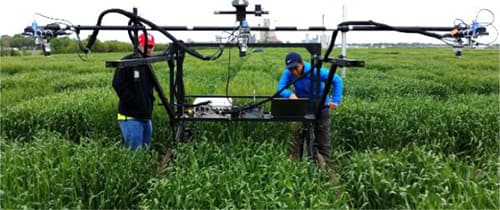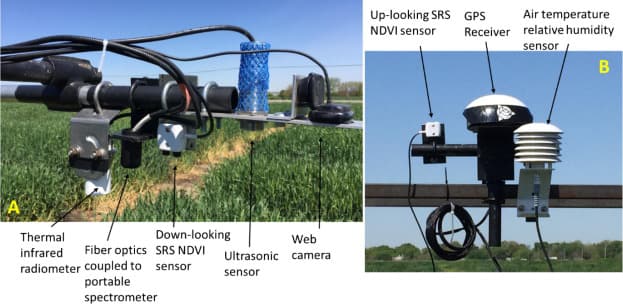|
Two Apogee Instruments SP-110 Silicon-cell Pyranometers have been integrated by Daeyeon CNI as part of a PV monitoring system at the Jin Jeop library located in Namyangju city, Gyunggido, Korea. The library has a PV power generation facility on the roof of the building that is converting DC voltage to AC voltage and suppling power to the building for electric lamps, air conditioning, and water heaters.
The two SP-110 pyranometers are mounted to the side of the PV panels. One pyranometer is mounted horizontal to measure the global solar irradiance, and the other is mounted tilted in the plane-of-array to measure global tilted irradiance or plane-of-array irradiance. Although the pyranometer measuring plane-of-array irradiance is mounted at the same angle as the PV panels and is measuring the irradiance the panels are receiving, both pyranometers are being used to monitor the system.
The data from the SP-110 sensors allow the integrator to see when irradiance measurements for the PV panels are below the accepted threshold to maintain the PV system. They are then able to use the data from the pyranometers and other instruments that are providing panel temperature, current, and voltage data to investigate the system and fix or replace bad electronic parts and PV panels.
|
|
27 February 2017
Monitoring PV Panels on Jin Jeop Library
01 February 2017
High Throughput Field Phenotyping Multi-sensor System
|
Apogee Instruments' SI-131 Infrared Radiometer (referred to in reference as thermal infrared radiometer, TIR) was selected to be part of a multi-sensor high throughput field phenotyping system for soybean and wheat breeding. The infrared radiometer was used to collect canopy temperature, one of six crop canopy sensor based traits being studied. Temperature, along with the remaining five sensor based traits: canopy height, two NDVI indices, reflectance, and RGB were studied to find a correlation with final yield.
The system consisted of a manually operated platform using a laptop with a special developed LabVIEW program as a controlling unit to collect, synchronize, and store measurements from all sensors for analysis. Apogee's SI-131 was mounted to a sensor bar on the platform at a distance that allowed for a representative subarea of the crop canopy to be seen in the sensor's field of view. The analog infrared radiometer was connected to the laptop through a USB data acquisition board. The LabVIEW program read the infrared radiometer outputs from the analog input ports and applied Apogee's calibration equation to convert the sensor voltage to degrees Celsius. Yufeng Ge, a Biological Systems Engineer from the study said, "The infrared radiometer by Apogee Instruments is among one of the most reliable and trustworthy sensors I have used."
The system was successfully tested over 240 plots of wheat and 120 plots of soybean crop using a manual stop-measure-go data collection method.* The study determined that final grain yield of soybean is strongly correlated with all six sensor base traits, and suggested the usefulness of the sensor system in plant breeding. *A stop-measure-go data collection method was used because slow response times from sensors did not allow for continuous measurement (the SI-131 with a response time of 0.6 seconds was noted as one of these sensors in the reference article). Since this study took place Apogee has developed high speed, analog infrared radiometers with a response time of 0.2 seconds and SDI-12 infrared radiometers...more information > |
|


